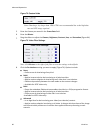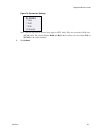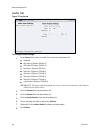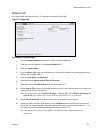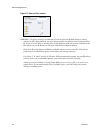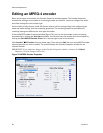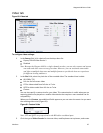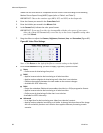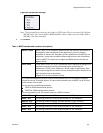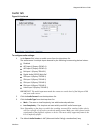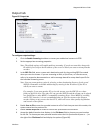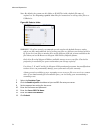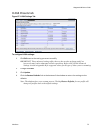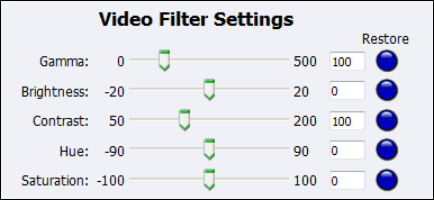
Advanced Operations
68 ViewCast
media files for other MPEG-4 compatible devices such as iPods according to the following
Motion Picture Expert Group (MPEG) types (refer to Table 1 and Table 2).
IMPORTANT! Choose the container type (MP4, 3G2, and 3GP) on the Output tab.
4.
Enter the frames per second in the Frame Rate field.
5.
Enter the kilobits per second in the Bitrate field.
6.
In the Format field, indicate the color space format.
IMPORTANT! If you specify a video size incompatible with the color space of your source
video, the system will automatically correct the size to the closes compatible setting when
you click Submit.
7.
Drag the sliders to adjust the Gamma, Brightness, Contrast, Hue, and Saturation (Figure 82).
Figure 82. Video Filter Settings
Note: Click Restore to the right of the filter to reset the settings to the default.
8.
Click the De-Interlace setting you want to apply (Figure 83). Options include:
None
– Performs no de-interlacing of any kind.
Bob0
– Applies inverse telecine de-interlacing to all telecine video.
– Applies motion adaptive de-interlacing to all video that is not telecine.
– Switches dynamically between the two modes as the content changes.
– Available for NTSC video only.
Bob1
– Drops the redundant fields and reassembles the video in a 24 fps progressive format.
– Applies inverse telecine de-interlacing to all telecine video.
– Performs no de-interlacing of video that is not telecine.
–Available for NTSC video only.
Advanced
– Is an algorithm for de-interlacing pure video (non-telecine) content.
– Applies motion adaptive interlacing to all video. It detects which portions of the image
are still and which portions are in motion then applies different processing to each
scenario.



